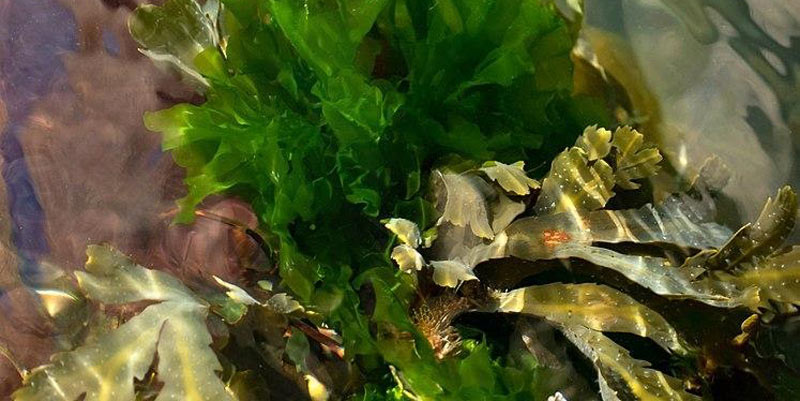
The green seaweed Ulva as a potential sustainable source of acrylic acid
Context
The organic compound acrylic acid - together with its esters and salts - is used commercially for the manufacture of various plastics, coatings, adhesives and paints. Acrylic acid has a vast market, which is estimated to reach $12 billion by the end of 2020, but currently, it can only be efficiently produced chemically from propane. The green seaweed Ulva produces acrylic acid from the amino acid methionine.
The research
Within the Horizon 2020 GENIALG project, CNAP, Biome Bioplastics and the Biorenewables Development Centre are investigating acrylic acid production in an environmentally friendly way from the macroalga Ulva, following two approaches. One is to investigate different extraction methods and enzymatic treatments for separating acrylic acid from the algal biomass, in the context of seaweed biorefineries. The second is to understand the biosynthetic pathway for acrylic acid in Ulva, with the view to engineering the pathway in a microbial chassis to enable the sustainable production of acrylic acid.
The project has already produced valuable information on amounts of acrylic acid that can be extracted from Ulva, as well as encouraging results on the identification of putative genes involved in its biosynthesis.
Contact us
Centre for Novel Agricultural Products
cnap@york.ac.uk
+44 (0)1904 328776
Department of Biology,
University of York,
Wentworth Way,
York
YO10 5DD
Featured researcher

Thierry Tonon
Dr Tonon is interested in algal physiology, enzyme characterization, evolution of metabolic pathways, and on developing biotechnological applications based on algae and/or algal genes.
Contact us
Centre for Novel Agricultural Products
cnap@york.ac.uk
+44 (0)1904 328776
Department of Biology,
University of York,
Wentworth Way,
York
YO10 5DD